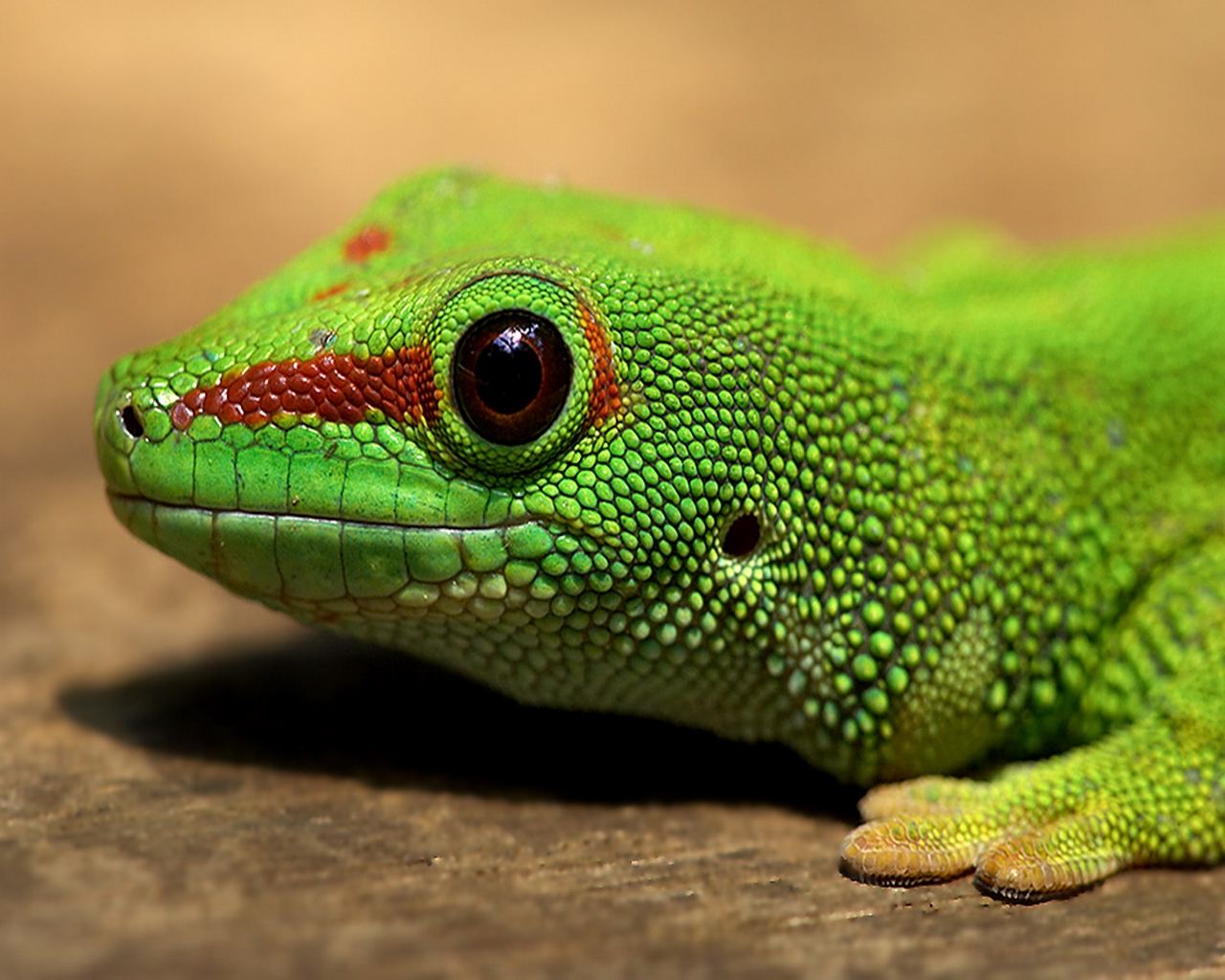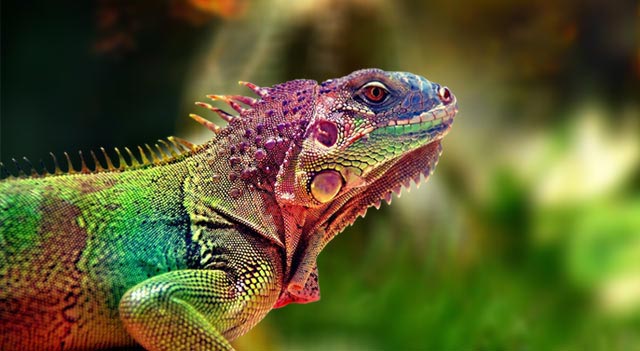
Lizards belong to the order Squamata, along
with snakes. There are approximately four
thousand lizard species.
Lizard Reproduction
Most lizards reproduce sexually, although some
are parthenogenetic. Most lizards are polygynous,
with males mating withmore than a single female,
although a few, such as Australian sleepy lizards
(Trachydosaurus rugosus), are monogamous. Mating
occurs after complex social behavior often involving
prolonged courtship. Fertilization is internal.
Males have paired intromittant organs called
hemipenes, one of which is inserted in the female's
cloaca during mating. Once eggs are fertilized,
the female carries eggs or embryos for
various periods of time. The weight of unborn offspring
usually reduces the female's ability to run
fast, thus affecting her ability to escape predators.
Many females change their behavior while gravid
to reduce the costs of reproduction. Costs of reproduction
are not confined to increased predation
risk; energy required for locomotion increases as
well due to the added weight that females carry
around while gravid.
Most lizards produce eggs (oviparity) but
many produce live young (viviparity) following
extended gestation periods. Females of oviparous
species deposit eggs in places that are moist but
not wet, such as inside rotted logs or in the
ground, often under rocks. Most lizard eggs have
pliable, leathery-shelled eggs, but a few, such as
geckos, have hard, calcified eggshells. Lizard eggs
in the nest are vulnerable to predation by many
animals because they cannot move. Eggs contain
yolk, which is high in energy and thus a good food
source for snakes, mammals, and even some other
lizards. Consequently, mortality of lizard eggs in
nests is high. Avast majority of oviparous lizards
do not provide parental care to eggs, but females
of a few, such as five-lined skinks and glass lizards,
remain with the eggs, brooding them until
they hatch. Hatchlings cut slices in their eggshells
with a specialized scale on the
front of their jaw, called the
egg tooth. Parental care ends
once offspring exit the eggs.
Hatchlings are fully formed,
resembling miniature adults.
Females of viviparous species
often provide some parental
care to neonates (newborns).
Most help neonates free themselves
from embryonic membranes,
often eating the membranes.
Afew, such as the large
Australian sleepy lizard, engage
in extended parental attention,
but it does not involve
feeding or grooming the
young, as in birds and mammals.
A number of lizard species
in several different families reproduce
by parthenogenesis,
a process in which females
produce daughters that are genetically
similar to their mothers
without the involvement
of males. In such species, potential
population growth is
extremely high because no energy
is wasted on males and
every individual produces offspring.
Although sex determination
in most lizards is chromosomal,
as in humans, some
species of lizards lack sex chromosomes
and have environmental sex determination.
Eggs incubated at one set of temperatures
produce all males, whereas eggs incubated
at another set of temperatures produce all females.
The juvenile stage of most lizards is also a high
mortality stage. Juvenile lizards are relatively
small in body size, and, as a consequence, many
predators can easily eat them. Because juveniles
do not reproduce, all energy taken in is devoted to
growth and maintenance. When lizards reach sexual
maturity, growth slows and most energy is directed
into reproduction and maintenance. Males
use energy in reproductive related behaviors such
as territorial defense and courtship, whereas females
use energy for production of eggs.
Evolution of Sensing Systems
One of the most fascinating aspects of the natural
history of lizards is the variation in relative importance
of sensory systems and its consequences.
Most lizards in the suborder Iguania are visually
oriented, sit-and-wait predators. They capture
prey by a process known as tongue prehension;
basically, they stick their tongues out and carry insects
into the mouth on their tongues. They are
colored for camouflage, move very little, and attack
moving prey from perches, to which they
usually return. Their social systems usually involve
territoriality, the defense of a specific area
against intruders of the same species. In most instances,
territorial behavior is directed
toward other males.
Lizards in the suborder Scleroglossa
use a combination of visual
and chemical cues to locate
and discriminate prey. They have
well-developed vomeronasal systems;
they pick up chemicals from
the external environment with
their tongues and bring them into
the mouth, where they are passed
over the vomeronasal organ (also
called the Jacobson's organ) in the
roof of their mouth. This organ
transfers information directly to
the lizard's brain, allowing it to
discriminate prey on the basis of
chemicals much like mammals'
sense of smell. These lizards capture
prey by grasping prey between
their jaws. The tongue may
be used to help manipulate prey
within the mouth but is not used
to capture prey. Most of these
are active foragers; they travel
around, searching for prey, many of which are not
moving.
Venomous and Dangerous Lizards
Most lizards will bite in self-defense, and, because
all lizards have teeth, some will break the skin.
Only two lizard species in the world are venomous,
the Gila monster and its close relative, the
Mexican beaded lizard. Both have powerful jaws
and are difficult to remove should they bite. They
do not have fangs like poisonous snakes; rather,
they have grooved teeth with venom glands located
in the rear of the mouth. Venom moves
along the grooved teeth as the lizards grind their
jaws while biting. Bites are only rarely fatal. Large
monitor lizards are nonvenomous, but their
mouths contain high levels of bacteria, which can
cause dangerous infections following bites. Some
of the larger monitors, such as the Komodo
dragon of the Lesser Sunda Islands, have sharp,
serrated teeth and can bite completely through the
leg muscles of large vertebrates. As a result, their
bites are potentially life-threatening even though
they rarely attack humans.
Lizard Facts
Classification:
Kingdom: Animalia
Subkingdom: Bilateria
Phylum: Vertebrata
Subphylum: Tetrapoda
Class: Reptilia
Subclass: Diapsida
Superorder: Lepidosauria
Order: Squamata
Suborders: Iguania (iguanids, chamaeleonids, and agamids); Scleroglossa
(all other lizards and snakes); Gekkota (gekkonids, eublepharids,
diplodactylids, and pygopodids); Autarchoglossa (teiids,
gymnophthalmids, lacertids, xantusiids, dibamids, amphisbaenids,
trogonophids, rhineurids, bipedids, scincids, gerrhosaurids, cordylids,
anguids, xenosaurids, helodermatids, lanthanotids, varanids, and
"snakes")
Geographical location: Every continent except Antarctica
Habitat: A vast majority live on land or in trees in all habitats (desert,
savanna, temperate and tropical forest); a few are semiaquatic; one,
the GalГЎpagos iguana, dives into the ocean and feeds on algae
Gestational period: Highly variable; eggs of Anolis lizards hatch in several
weeks, while embryos of some skinks (Mabuya) require a year
Life span: Variable; some small skinks and geckos live one year or less,
whereas Gila monsters (Heloderma) and large monitors (Varanus)
live thirty years or more
Special anatomy: All lizards have scales (like other reptiles), paired
copulatory organs in males (hemipenes), and claws on their feet;
most have four legs, an elongate tail, eyelids, and external ear openings;
some lizards in several families have lost two or all four legs as
adaptations for life underground, some have their ear openings
completely covered by scales, some have short tails, and some have
their eyes covered by a transparent scale (spectacle); some subterranean
lizards, such as the strange worm lizards, have eyes reduced to
an eyespot covered by scales
Other popular Animals
Photo Gallery of - Lizard








 Animalia Life
Animalia Life